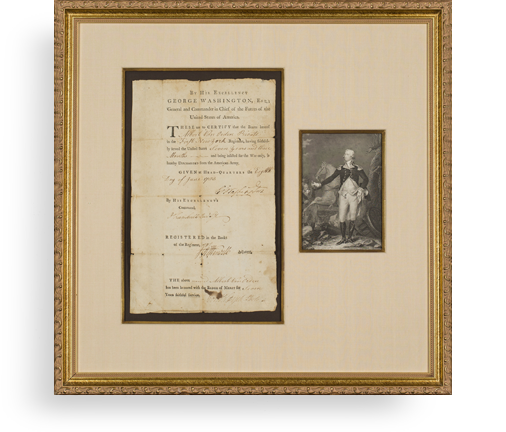President James Buchanan and His Entire Cabinet


This is the first time we have seen one sheet of paper with the signatures of Buchanan and his Cabinet
On April 15, 1858, a letter was sent to President Buchanan stating, “At the earnest desire of Eliza Champlin, of the city of New York, widow of the late John Champlin, who was an ardent supporter of Democratic principles, I have to request in her behalf that you will pleased to sign...
On April 15, 1858, a letter was sent to President Buchanan stating, “At the earnest desire of Eliza Champlin, of the city of New York, widow of the late John Champlin, who was an ardent supporter of Democratic principles, I have to request in her behalf that you will pleased to sign your names hereunto, she being particularly anxious to obtain your several autographs.”
The President and his Cabinet complied. Some were soon prominent secessionists.
President Buchanan has signed below the text of the letter. There were seven Cabinet positions in the Buchanan administration, and all seven men have signed below the President. Secretary of State Lewis Cass signed first. He was the party’s presidential nominee in 1848, losing to Zachary Taylor. Next is Aaron Brown, the Postmaster General. Prior to that, he was governor of Tennessee. Navy Secretary Isaac Toucey follows; he had been Polk’s Attorney General. Next is Secretary of War John Floyd. A southern sympathizer, Floyd used his position as secretary of war to benefit the South, arranging for thousands of dollars in government bonds, as well as armaments and material, to be shipped from northern locations to the South in preparation for civil war. He is followed by Secretary of the Treasury Howell Cobb. Following the election of Abraham Lincoln as President in 1860, Cobb resigned his cabinet post, returned to Georgia, and led his state to secession. He then served as president of the convention establishing a provisional Confederate government. In 1861, he administered the oath of office to Confederate president Jefferson Davis. He is followed by Attorney General Jeremiah Black, who took over the post of secretary of state after Cass’s resignation. Last is Secretary of the Interior Jacob Thompson. When President Buchanan attempted to fortify Fort Sumter, Thompson resigned his post, informed the people of Charleston, South Carolina, of the President’s plans, and ultimately became an aide to Southern General P.G.T. Beauregard. He was also a Confederate representative in Canada.
This is the first time we have seen one sheet of paper with the signatures of Buchanan and his Cabinet, made all the more interesting by the Confederate associations.

Frame, Display, Preserve
Each frame is custom constructed, using only proper museum archival materials. This includes:The finest frames, tailored to match the document you have chosen. These can period style, antiqued, gilded, wood, etc. Fabric mats, including silk and satin, as well as museum mat board with hand painted bevels. Attachment of the document to the matting to ensure its protection. This "hinging" is done according to archival standards. Protective "glass," or Tru Vue Optium Acrylic glazing, which is shatter resistant, 99% UV protective, and anti-reflective. You benefit from our decades of experience in designing and creating beautiful, compelling, and protective framed historical documents.
Learn more about our Framing Services










































































































